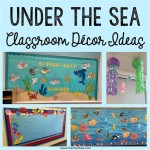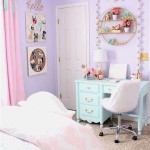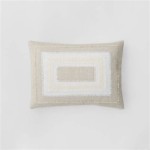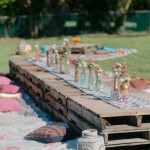How To Decorate a Dinner Table
Decorating a dinner table transcends the mere act of setting utensils and plates; it's about crafting an atmosphere, setting a mood, and enhancing the overall dining experience. A well-decorated table can elevate a simple meal into a special occasion, whether it's a casual weeknight dinner or a formal holiday gathering. Thoughtful attention to detail creates an inviting space that encourages connection and appreciation for the food and company. This article provides a comprehensive guide on how to effectively decorate a dinner table, focusing on key elements and considerations for various occasions.
Understanding the Occasion and Theme
The first step in decorating a dinner table is to clearly define the occasion and desired theme. Is this a casual family dinner, a holiday celebration, a romantic evening, or a formal dinner party? The answer to this question will dictate the level of formality, color palette, and overall style of the table setting. A casual family dinner might call for simple, easy-to-clean linens and durable tableware, while a formal dinner party requires more elegant and sophisticated pieces.
For holiday celebrations, the theme is often predetermined by the holiday itself. Thanksgiving might call for warm autumnal colors, natural elements like pumpkins and leaves, and rustic textures. Christmas might incorporate traditional colors like red and green, festive decorations like ornaments and garlands, and sparkly accents. Easter could feature pastel colors, floral arrangements, and whimsical decorations like Easter eggs and bunnies.
Even without a specific holiday to guide the design, establishing a theme can provide direction and cohesion. Themes can be based on color palettes (e.g., monochromatic, complementary), styles (e.g., minimalist, rustic, bohemian), or even seasonal elements (e.g., spring blooms, summer seashells, winter greenery). Identifying the occasion and theme upfront ensures that all subsequent decorating decisions align with the desired aesthetic.
Consider the style of the dining room and the existing décor. The table setting should complement the surrounding environment to create a harmonious and balanced look. If the dining room has a modern aesthetic, a sleek and minimalist table setting might be appropriate. If the dining room is more traditional, a classic and elegant table setting might be a better fit.
Once the occasion and theme are defined, it's beneficial to create a mood board or gather inspiration from magazines, websites, or social media platforms. This visual representation can help solidify the design concept and provide a reference point throughout the decorating process.
Essential Elements of a Dinner Table Setting
Regardless of the occasion or theme, certain elements are fundamental to a well-decorated dinner table. These elements include linens, tableware, centerpieces, and lighting. Each of these elements plays a crucial role in creating a visually appealing and functional table setting.
Linens: Table linens form the foundation of the table setting and significantly impact the overall aesthetic. A tablecloth provides a base layer of color and texture, while placemats define individual dining spaces. Napkins, available in various materials and folds, add a touch of elegance and functionality. The choice of linens should complement the theme and formality of the occasion. For casual dinners, cotton or linen tablecloths and napkins are suitable. For formal occasions, damask or silk linens are more appropriate.
The color and pattern of the linens should coordinate with the tableware and centerpiece. Solid-colored linens provide a clean and classic look, while patterned linens add visual interest. Consider the size of the table when selecting a tablecloth; it should drape evenly on all sides without being too long or too short. Placemats should be large enough to accommodate a dinner plate, silverware, and a drink. Napkins can be folded in various ways, from simple rectangles to elaborate origami-like designs. Invest in quality linens that will withstand repeated use and washing.
Tableware: Tableware encompasses plates, bowls, silverware, and glassware. The selection of tableware should be based on the menu, the level of formality, and the overall theme. Dinner plates are the primary serving dishes and should be chosen to complement the tablecloth and centerpiece. Salad plates, soup bowls, and dessert plates are added as needed, depending on the courses being served. Silverware should be arranged according to formal etiquette, with forks on the left, knives on the right, and spoons on the right.
Glassware includes water glasses, wine glasses, and other beverage containers. The types of glasses used should correspond to the drinks being served. Wine glasses should be chosen based on the type of wine (e.g., red wine, white wine, sparkling wine). Water glasses should be placed to the right of the wine glasses. The tableware should be clean, polished, and free of any chips or cracks. Mixing and matching different patterns and textures can add visual interest, but ensure that the overall look remains cohesive and balanced.
Centerpieces: The centerpiece is the focal point of the dinner table and should be visually appealing and proportionate to the size of the table. Centerpieces can range from simple floral arrangements to elaborate displays of candles, fruits, or decorative objects. The height of the centerpiece should be considered to avoid obstructing views across the table. A general rule of thumb is to keep the centerpiece below 12 inches or above 24 inches. Floral arrangements are a classic choice for centerpieces, adding color, fragrance, and natural beauty. Candles create a warm and inviting atmosphere. Fruit bowls, decorative bowls, and sculptural objects can also serve as effective centerpieces. The material and color of the centerpiece should complement the other elements of the table setting.
Lighting: Lighting plays a significant role in setting the mood and atmosphere of the dinner table. Soft, warm lighting is generally preferred for creating a relaxed and inviting ambiance. Candles are an excellent source of ambient lighting, adding a touch of elegance and romance. Chandeliers or pendant lights above the table can provide additional illumination. Dimmers can be used to adjust the brightness of the lights to create the desired effect. Avoid harsh or bright lighting, which can be unflattering and uncomfortable.
Adding Personal Touches and Finishing Details
While the essential elements provide the foundation for a well-decorated dinner table, it's the personal touches and finishing details that truly elevate the experience. These details can reflect the host's personality, the occasion's significance, or simply add a unique and memorable element to the table setting.
Personalized Place Cards: Place cards add a touch of elegance and formality to the table setting, especially for dinner parties or special occasions. They also help with seating arrangements, ensuring that guests are seated comfortably and strategically. Place cards can be handwritten or printed, and can be decorated with calligraphy, ribbons, or small embellishments. They can be placed on top of the dinner plate, next to the silverware, or in a decorative holder. Consider the font, color, and style of the place cards to match the overall theme of the table setting. Personalized touches, such as including a small photograph or a handwritten note, can make guests feel especially welcome.
Favors and Gifts: Small favors or gifts are a thoughtful way to thank guests for attending the dinner party. Favors can be anything from small chocolates or candies to miniature plants or personalized trinkets. The favors should be related to the theme of the occasion or reflect the host's personality. They can be placed at each place setting or presented to guests as they depart. Packaging the favors attractively adds to the overall presentation. A handwritten note or tag expressing gratitude can accompany the favor.
Themed Decorations: Incorporating themed decorations can enhance the overall atmosphere and create a more immersive experience. These decorations should be subtle and tasteful, rather than overwhelming or distracting. For a nautical theme, consider adding seashells, starfish, or rope accents. For a garden theme, incorporate fresh flowers, greenery, or small potted plants. For a vintage theme, use antique candlesticks, vintage china, or lace linens. The themed decorations should complement the other elements of the table setting and contribute to the overall aesthetic.
Seasonal Accents: Seasonal accents can add a touch of timeliness and relevance to the table setting. In the spring, incorporate fresh blooms like tulips, daffodils, or hyacinths. In the summer, use seashells, starfish, or bright-colored linens. In the fall, incorporate pumpkins, gourds, leaves, or acorns. In the winter, use pinecones, evergreen branches, or sparkly ornaments. Seasonal accents can be used in the centerpiece, as place card holders, or as decorative accents on the table.
Creative Napkin Folds: Elevate the table presentation by exploring creative napkin folds beyond the standard rectangle or triangle. Numerous online tutorials and guides demonstrate various napkin folding techniques, ranging from simple to elaborate designs. Consider the occasion and the overall theme when selecting a napkin fold. More formal occasions may call for intricate and elegant folds, while casual gatherings can benefit from simpler, more relaxed styles. Experiment with different materials and textures to enhance the visual appeal of the napkin fold. Incorporating ribbon, rings, or floral accents can further personalize the napkin presentation.
Music and Ambiance: The auditory aspect of the dining experience is often overlooked, but music can significantly contribute to the overall ambiance. Select music that complements the occasion and the mood you wish to create. For a romantic dinner, consider soft jazz or classical music. For a lively dinner party, choose upbeat pop or world music. Ensure that the volume is appropriate, allowing for conversation without being intrusive. Consider other sensory elements, such as lighting and fragrance, to create a cohesive and inviting atmosphere.

Dining Table Décor Ideas For Your Home Designcafe

40 Table Decoration Ideas 2025 Chic Easy Tablescape

Beautiful And Easy Dining Room Table Centerpiece Ideas Stonegable

Beautiful And Easy Dining Room Table Centerpiece Ideas Stonegable

How To Set A Dinner Table That S Perfect For Any Occasion

How To Decorate A Dining Table

Dining Room 10 Tips To Decorate Your Dinner Table Everyday Beautifully

40 Best Table Decorating Ideas For Every Occasion

How To Decorate Your Table For Dinner Wren Kitchens Blog
:strip_icc()/dining-room-table-decor-ideas-1-ashley-montgomery-design-the-nesbit-ef78d3dec9564a2eace6010270f75fa3.png?strip=all)
33 Standout Dining Table Decor Ideas
Related Posts







